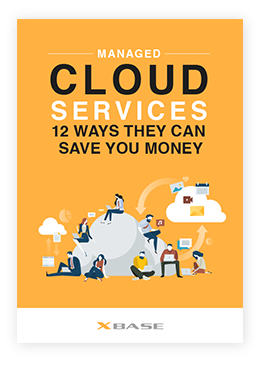Moving your data and processes from on-premises systems to the cloud does not involve a mere replacement of old hardware with new ones. One can imagine it like a business moving from the suburbs to a downtown location. While it will enjoy more immediate access to a wider selection of services, shopping malls, food hubs, and cultural centers, existing employees will have to commute farther to get to work. The company will want to make adjustments, such as offer flexible work hours and implement work-from-home policies, to mitigate the disgruntlement and performance reduction that longer and more stressful commutes will cause.
Similarly, when a company moves its work processes to the cloud, users trying to access their work may experience lags and unfamiliar processes. If the company doesn't improve network performance, it could experience "traffic jams," and users may become disgruntled and performance may suffer.
So while your cloud service provider (CSP) will be the one to handle the acquisition of infrastructure components, monitoring, and repairs and maintenance, it’s still good to be aware of a few infrastructure considerations before leaping towards the cloud.
Plan for capacity
When you store and process data in-house, you’ll build the most robust IT infrastructure on-premises and dedicate the greatest bandwidth (i.e., capacity for data transmission and/or processing) for your internal network. Since internet connections will be used mostly for email and web browsing, consumer-grade upload and download speeds will often do.
However, moving your data and processes to the cloud means having your apps and files accessed exclusively over the internet. This means that you’ll need more bandwidth for traffic between your network and the cloud infrastructure — and non-enterprise connections are bound to suffer performance issues that will frustrate users. Becoming cloud-based can mean a dedicated fibre optic service may be the better option, but it’s a solution that can cost more money than the business is willing to spend, and, in some locations, may not even be available.
The lesson that many other firms learned the hard way is that you need to completely assess the capabilities of your network and determine bandwidth requirements prior to moving workloads onto the cloud.
Download our free eBook!
Get a better idea of what managed cloud services can do for your business by reading our eBook: Managed Cloud Services: 12 Ways They Can Save You Money.
Be like a fast food restaurant when it comes to network latency
Measure the latency — i.e., the time it takes for data to be transferred once a request for its transfer has been made — of your network connections. To make things less jargony, let’s imagine ordering food at a fast food joint. With this in mind, latency is the time it takes for you to get your order once you’ve placed it. Latency can be affected by four things:
-
Distance
If the kitchen is far away from the service counter, then food will take longer to be served. In the same manner, if the data center of your cloud provider is a great distance away from an app user’s device, that user will experience performance delays. If this is the case, you must ask your provider to switch you to a different application server or data center, one that is in a region that’s closer to that app’s users.
-
Network intermediaries and overall configuration
Unlike in grab-and-go convenience stores, fast food patrons have to stay in front of the service counter and wait for their orders to be served. Similarly, IT users rarely connect directly to cloud-based apps. Their requests have to go through firewalls, proxies, and other intermediaries that control access and moderate network traffic. Misconfiguring any one of these can lead users to believe that something’s wrong with their app because it is too slow.
To better grasp the concept of configurations, let’s picture fast food kitchens. These are optimized for speedy service. While grills and deep fryers are found deep inside the kitchen, easy-to-serve items such as pop and soft-serve ice cream are closest to the service counter, where they can be accessed quickly and safely by service staff.
In a similar fashion, applications and their intermediaries across networks must be set up logically and correctly because errors — such as misconfigured DNS lookups — can lead to a significant performance slowdown or even prevent users from being able to access files or applications. Of course, if your team is less than familiar with diagnosing these configuration problems, internal users could experience lengthy disruptions to their work which could impact business operations and customer satisfaction.
-
Internal network-to-internet bandwidth
Drive-thrus normally have only one cashier. When you’re the only customer there, you can expect to be served quickly. However, long queues will eventually form once more patrons arrive during lunch hour. In the same way, public internet connections often serve many customers, making their service slow during peak hours. As previously mentioned, a dedicated fibre connection is ideal for cloud setups because using it is like having many drive-thru counters exclusively for you and your staff.
-
Internal network bandwidth
It may be that the fast food joint has several cashiers, but service may still become slow. This may be caused by unmotivated kitchen workers, or the kitchen space may be too small to handle higher volumes of orders. In the same way, your internal network can only handle so much traffic. When you migrate to the cloud, it places added strain on your network, over and above the everyday traffic it has already experienced. Will your existing network be able to handle it? To make accurate bandwidth projections, do the following:
- Block users from visiting non-work-related sites. People inside your network may be requesting for more data than they should. For instance, slackers who binge watch YouTube videos take away bandwidth from those who do actual work.
- Take into account the data requirements of each application you’re using.
- Look into current and historical bandwidth consumption by department, branch, and IP address. Some departments, like Marketing or HR for training for example, may access, store, and produce/edit large volumes of video. Moving video from a cloud server to a user’s desktop (and back again) consumes a significantly higher amount of bandwidth compared to exchanging Word documents or Excel spreadsheets.
-
Ask your managed IT services provider (MSP) to help you assess your current usage plus knowledgeably forecast post-cloud migration bandwidth allocations for these segments of your organization. Your MSP will determine if your bandwidth requirements are large enough to necessitate a fibre connection, as well as look into factors that may justify allocation flexibility, such as seasonality (e.g., tax season for an accounting firm).
Jumping on the cloud may be just the ticket your business needs to get it to the next level — or it could cause frustrated employees, unsatisfied customers, and poor financial performance You need experts from XBASE Technologies who’ll thoroughly examine your organization and help you implement Exponentially Better™ IT solutions — be they cloud-based or not — that best serve your goals.


